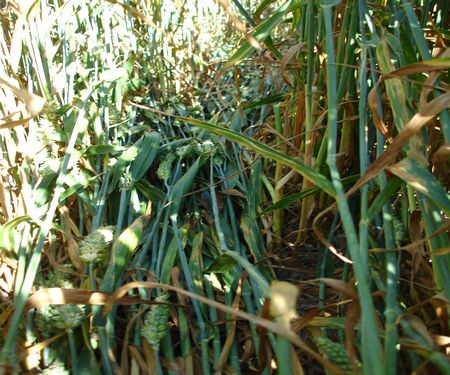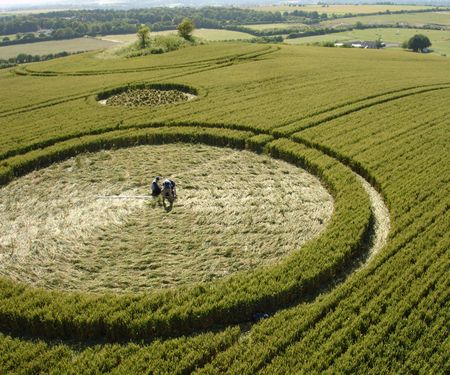 |
||||||||||||||||||||||||
 |
 |
|||||||||||||||||||||||
 |
||||||||||||||||||||||||
 |
 |
 |
 |
|||||||||||||||||||||
| 2015 CIRCLES | 2014 CIRCLES | 2013 CIRCLES | 2012 CIRCLES | |||||||||||||||||||||
|
||||||||||||||||||||||||
 |
 |
|||||||||||||||||||||||

|
Ground Report – Hinton Parva, 15/07/06My research and really a lot of my interest in crop circles is based around the intricacy of the lay of the crop. This formation did not disappoint! Although unassuming in overall design, this set of three ringed circles was simply stunning at ground level. Like the celtic cross at Marden last year, it is difficult to know where to start! The design is aligned with a small round barrow directly to the West. The circles are in a straight line from East to West. It comprises a larger central circle, which in fact is elliptical, measuring 69ft North to South and 67ft from East to West. Surrounding this is a 5ft wide ring of standing crop, and then another ring of laid crop just under 5ft wide. The two outer circles are smaller, measuring 35ft in diameter, each with a 2.5ft wide ring of standing crop around the outside, followed by a laid ring which is much narrower, around 1ft in places but 6-8 inches in others. All of the crop that is laid flat flows in a clockwise direction. 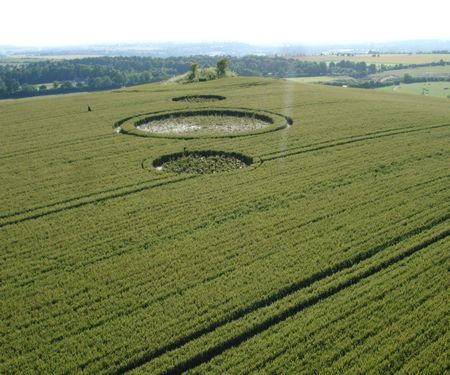
Circle 1The first circle we investigated is the one nearest to the track running alongside the field. It is the furthest from the barrow. On entering it becomes clear very quickly that this is no ordinary crop circle. The central laid area is actually only partially laid, being formed of a huge number of tufts where the crop is bent about 1ft off the ground. Narrow pathways of laid crop run in between these tufts in all directions. 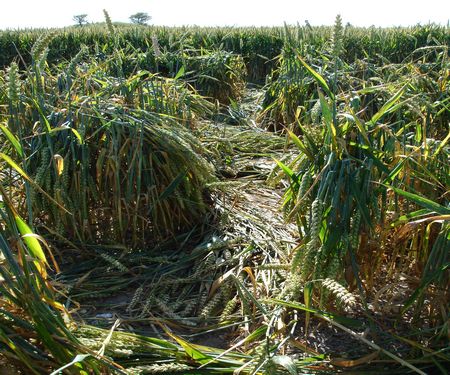
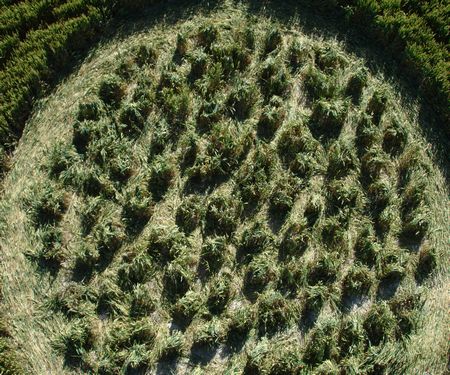
This creates a very unusual effect which I have only seen before in the first Marden crop circle of last season. It initially looks as though the tufts are all similar in size and construction, but on closer inspection they are actually ALL different! The variety of construction of these tufts can be see in the images below. 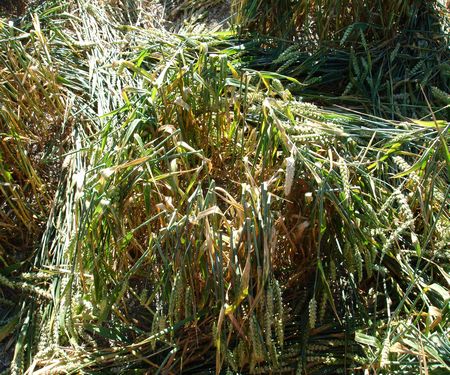
All stems bent outwards and towards the ground. 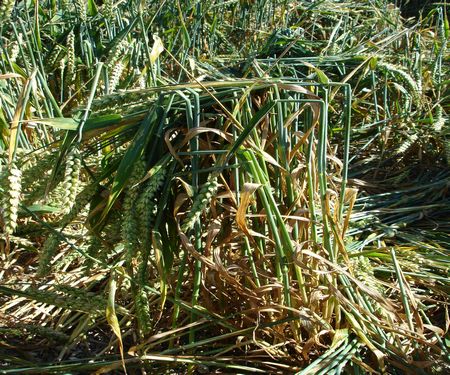
All stems bent over to one side. 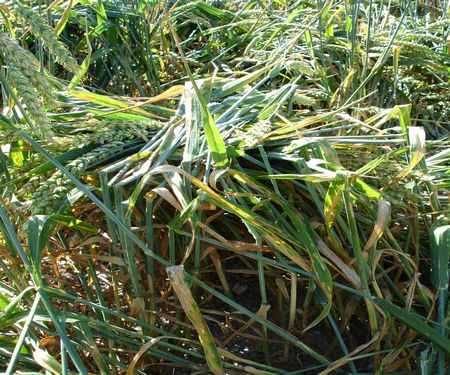
All stems bent inwards and flat across the top. 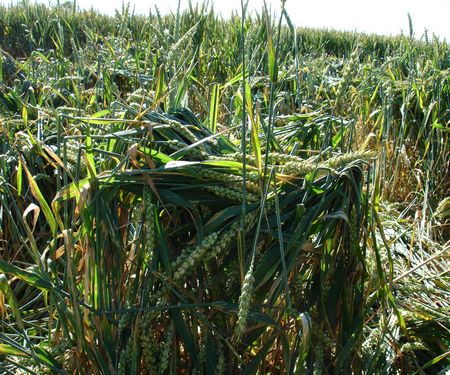
All stems bent inwards but further to the ground making the central construction tighter and stronger. 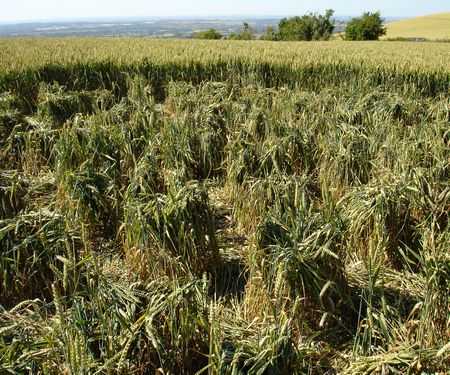
The most common variety of construction was for all of the stems to be bent towards the centre of the tuft, and then either flatten off the top or be folded more tightly towards the ground in the middle. This can be seen in the image above. Most impressive is the fact that although there seemed to be no evidence of stems having been bent at the node, where they were bent or rather folded, usually 1ft off the ground, there was very little damage to any of them. Just the physical fact of there being so many stems not flattened to the ground, but sculpted into shapes is mind blowing! 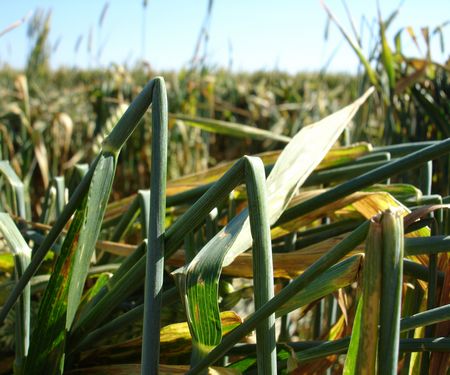
Another interesting feature which could be easily overlooked is a single smaller and slightly more knotted tuft which instead of making up part of the central area, stands towards the edge of the laid circle. This seems completely out of place here. There does not appear to be any obvious reason for it being there!
Finally, the surrounding ring. Having seen aerial photos of this crop circle before visiting it, I was initially surprised to find rings around the two outer circles. When looking at the photos my attention had been drawn towards the central pattern so I didn’t notice the narrow rings. The crop within appeared to be laid with the same care as that in the central area.
Central CircleMoving into the central circle it appears to be much simpler but there is much more beneath the surface! The crop is lightly flattened across the whole circle and there is a nice off centre swirl a few feet away from the middle. 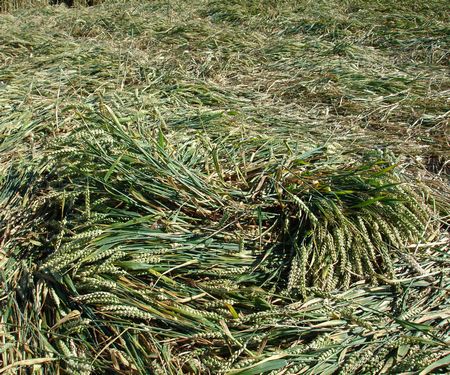
It soon becomes clear while walking around this circle that there are underlying pathways running in different directions to the main flow. There are many more of these than it seems at first. In fact they criss cross underneath the main clockwise flow throughout the whole circle. Again, after looking back at aerial photos these can be seen. The pole shot below also shows them quite clearly. 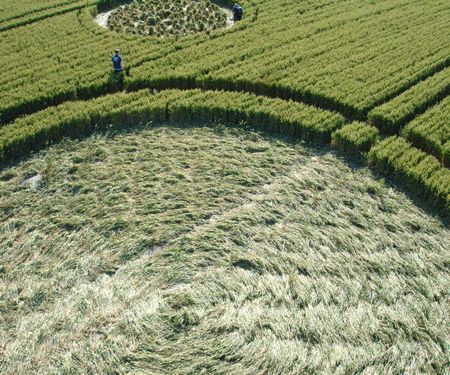
These narrow strips of crop have clearly been laid before the main flow, and alternate direction to form a grid. The lines follow a North to South (and vice versa) and East to West (and vice versa) direction. Where they meet there is often a visibly raised area, as the stems flowing in different directions have collided causing them to get stuck. The main clockwise flow of crop is involved in this collision, suggesting the amazing fact that all of the crop must have been laid at exactly the same time! Where this has occurred the crop is in equally good condition as in the rest of the formation. 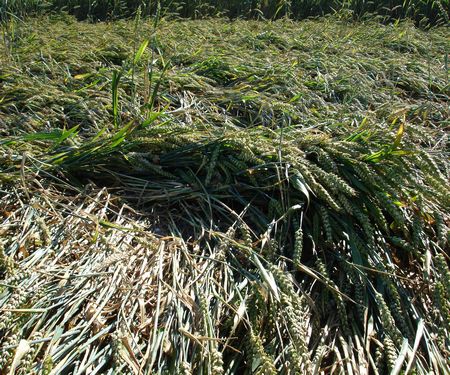
Another point of interest in this circle are two rabbit holes! These lie close together and are actually bisected by one of the grid lines making up the flow of the central circle. One of the holes is more visible, with a larger area of bare earth by it. Here the laid crop almost appears to flow around the hole itself! 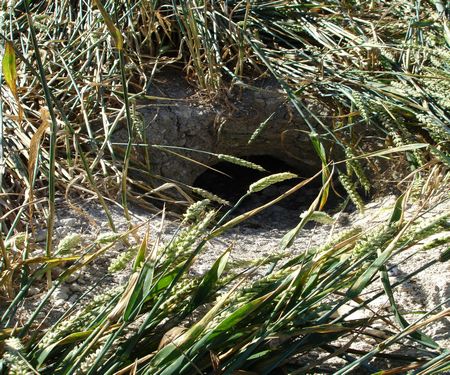
The other is less obvious as the crop flows over the top. I inspected this closely and found no damage to this crop like you might expect if it had been squashed down into the hole by whatever force. 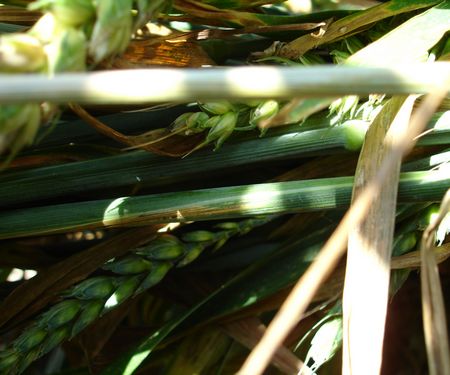
Circle 3This formation had already exceeded my expectations and continued to do so as I entered the third circle nearest to the round barrow. From the aerial and pole shots it looks the same as the other small circle, but is in fact completely different! Where in the first circle, as I have discussed, there is a wide variety in the way the tufts have been constructed, in this one they are all the same. Every tuft is actually a simple knot made with two sections of crop. 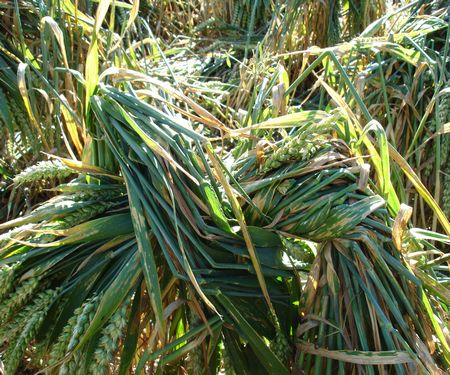
These knots are very tight and would take quite a bit of strength to pull them apart. Due to their different construction they are also lower to the ground than the tufts in the first circle. The absolute best feature in my opinion is that underneath all of these knots, the rest of the crop keeps flowing! Sometimes just a few stems, sometimes more of a bunch can be seen flowing through the gaps – this is really special! 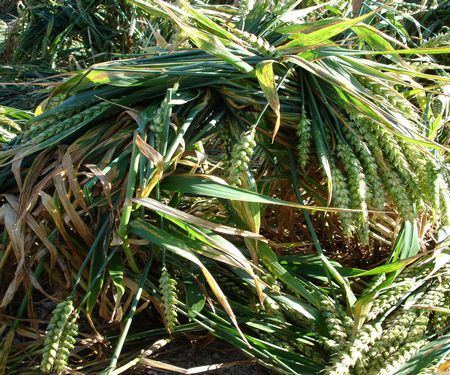
White lines! There are areas within this formation where white lines can be seen on single or groups of stems (see image below). 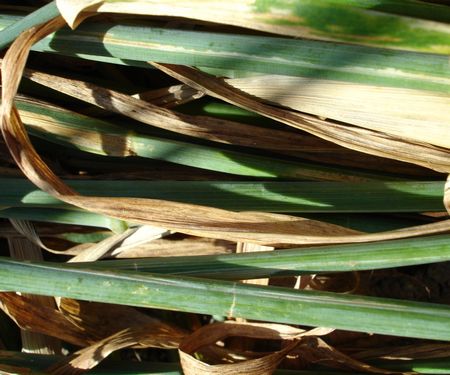
These are quite frequent, but predominantly the condition of the crop is absolutely perfect. 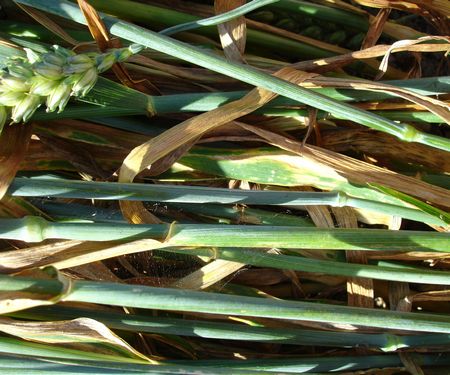
This is a beautiful, unassuming and simple little formation made even more special by its awesome hilltop location. A really good example of the magic and mystery that can be found when you look a bit closer. This will take some beating – but I will remain optimistic as always!
Crop Circle Summary
Alternative Websites |


